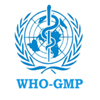Hydroxychloroquine Tablets
What is this medication?
HYDROXYCHLOROQUINE (hye drox ee KLOR oh kwin) treats autoimmune conditions, such as rheumatoid arthritis and lupus. It works by slowing down an overactive immune system. It may also be used to prevent and treat malaria. It works by killing the parasite that causes malaria. It belongs to a group of medications called DMARDs.
This medicine may be used for other purposes; ask your health care provider or pharmacist if you have questions.
COMMON BRAND NAME(S): Plaquenil, Quineprox
What should I tell my care team before I take this medication?
They need to know if you have any of these conditions:
Diabetes
Eye disease, vision problems
G6PD deficiency
Heart disease
History of irregular heartbeat
If you often drink alcohol
Kidney disease
Liver disease
Porphyria
Psoriasis
An unusual or allergic reaction to chloroquine, hydroxychloroquine, other medications, foods, dyes, or preservatives
Pregnant or trying to get pregnant
Breast-feeding
How should I use this medication?
Take this medication by mouth with a glass of water. Take it as directed on the prescription label. Do not cut, crush or chew this medication. Swallow the tablets whole. Take it with food. Do not take it more than directed. Take all of this medication unless your care team tells you to stop it early. Keep taking it even if you think you are better.
Take products with antacids in them at a different time of day than this medication. Take this medication 4 hours before or 4 hours after antacids. Talk to your care team if you have questions.
Talk to your care team about the use of this medication in children. While this medication may be prescribed for selected conditions, precautions do apply.
Overdosage: If you think you have taken too much of this medicine contact a poison control center or emergency room at once.
NOTE: This medicine is only for you. Do not share this medicine with others.
What if I miss a dose?
If you miss a dose, take it as soon as you can. If it is almost time for your next dose, take only that dose. Do not take double or extra doses.
What may interact with this medication?
Do not take this medication with any of the following:
Cisapride
Dronedarone
Pimozide
Thioridazine
This medication may also interact with the following:
Ampicillin
Antacids
Cimetidine
Cyclosporine
Digoxin
Kaolin
Medications for diabetes, like insulin, glipizide, glyburide
Medications for seizures like carbamazepine, phenobarbital, phenytoin
Mefloquine
Methotrexate
Other medications that prolong the QT interval (cause an abnormal heart rhythm)
Praziquantel
This list may not describe all possible interactions. Give your health care provider a list of all the medicines, herbs, non-prescription drugs, or dietary supplements you use. Also tell them if you smoke, drink alcohol, or use illegal drugs. Some items may interact with your medicine.
What should I watch for while using this medication?
Visit your care team for regular checks on your progress. Tell your care team if your symptoms do not start to get better or if they get worse.
You may need blood work done while you are taking this medication. If you take other medications that can affect heart rhythm, you may need more testing. Talk to your care team if you have questions.
Your vision may be tested before and during use of this medication. Tell your care team right away if you have any change in your eyesight.
This medication may cause serious skin reactions. They can happen weeks to months after starting the medication. Contact your care team right away if you notice fevers or flu-like symptoms with a rash. The rash may be red or purple and then turn into blisters or peeling of the skin. Or, you might notice a red rash with swelling of the face, lips or lymph nodes in your neck or under your arms.
If you or your family notice any changes in your behavior, such as new or worsening depression, thoughts of harming yourself, anxiety, or other unusual or disturbing thoughts, or memory loss, call your care team right away.
What side effects may I notice from receiving this medication?
Side effects that you should report to your care team as soon as possible:
Allergic reactions—skin rash, itching, hives, swelling of the face, lips, tongue, or throat
Aplastic anemia—unusual weakness or fatigue, dizziness, headache, trouble breathing, increased bleeding or bruising
Change in vision
Heart rhythm changes—fast or irregular heartbeat, dizziness, feeling faint or lightheaded, chest pain, trouble breathing
Infection—fever, chills, cough, or sore throat
Low blood sugar (hypoglycemia)—tremors or shaking, anxiety, sweating, cold or clammy skin, confusion, dizziness, rapid heartbeat
Muscle injury—unusual weakness or fatigue, muscle pain, dark yellow or brown urine, decrease in amount of urine
Pain, tingling, or numbness in the hands or feet
Rash, fever, and swollen lymph nodes
Redness, blistering, peeling, or loosening of the skin, including inside the mouth
Thoughts of suicide or self-harm, worsening mood, or feelings of depression
Unusual bruising or bleeding
Side effects that usually do not require medical attention (report to your care team if they continue or are bothersome):
Diarrhea
Headache
Nausea
Stomach pain
Vomiting
This list may not describe all possible side effects. Call your doctor for medical advice about side effects. You may report side effects to FDA at 1-800-FDA-1088.
Where should I keep my medication?
Keep out of the reach of children and pets.
Store at room temperature up to 30 degrees C (86 degrees F). Protect from light. Get rid of any unused medication after the expiration date.
To get rid of medications that are no longer needed or have expired:
Take the medication to a medication take-back program. Check with your pharmacy or law enforcement to find a location.
If you cannot return the medication, check the label or package insert to see if the medication should be thrown out in the garbage or flushed down the toilet. If you are not sure, ask your care team. If it is safe to put it in the trash, empty the medication out of the container. Mix the medication with cat litter, dirt, coffee grounds, or other unwanted substance. Seal the mixture in a bag or container. Put it in the trash.
NOTE: This sheet is a summary. It may not cover all possible information. If you have questions about this medicine, talk to your doctor, pharmacist, or health care provider.
Most Popular

Visipaque Iodixanol 320 Mg
March 22, 2025

Ulinastatin 100000 Iu Injection (ULINAFIC)
March 22, 2025

Haloperidol ( HPDOL 0.5mg Injecation)
March 22, 2025
Business Hours
Mon - Fri :- 8am - 5pm
Sat - Sun :- 8am - 11am










